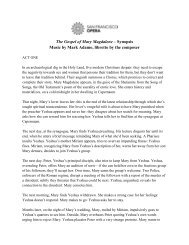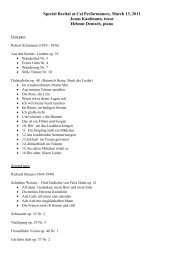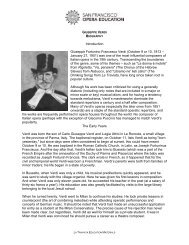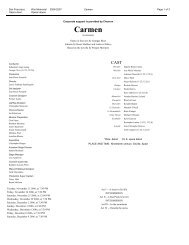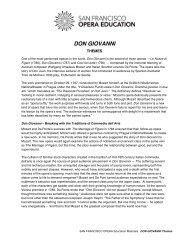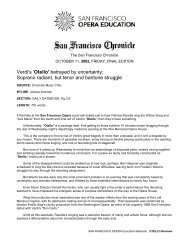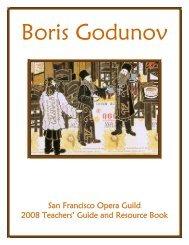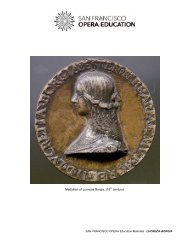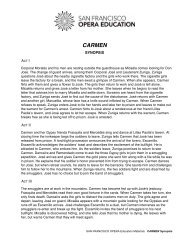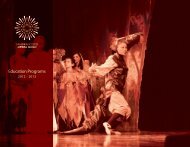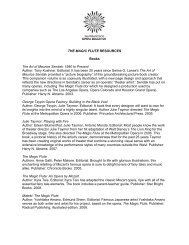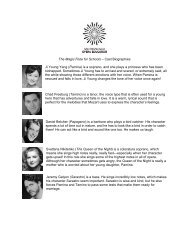You also want an ePaper? Increase the reach of your titles
YUMPU automatically turns print PDFs into web optimized ePapers that Google loves.
Bohemians in Paris, 1830<br />
Paris in 1830 was a hub of revolutionary activity. The French had overthrown their<br />
monarch, Louis XVI, in 1789, but four decades later, the monarchy still existed in an<br />
uneasy truce with the constitutional government, and the populace was vocal in their<br />
complaints. The liberal press was attacking the government, and one of these papers, the<br />
National, was devoting a series to the English revolution of 1688.<br />
Amidst all the shouting, there was another almost parallel revolution brewing within<br />
the artist community of the <strong>La</strong>tin Quarter. The Quarter was home to some of the most<br />
significant young artists of their generation and perhaps the century: the playwrights/<br />
novelists Alexandre Dumas, Victor Hugo, Emile Deschamps, and George <strong>San</strong>d, composers<br />
Hector Berlioz and Frédéric Chopin, actress Marie Dorval, and painter Eugène Delacroix,<br />
among others.<br />
Dumas and Hugo were creating theatre that was completely at odds with the rigidly<br />
prescribed, dusty style of presentation that had reigned for years at the Théatre Français.<br />
In 1827, the financial weakness of the theatre allowed the young playwrights to gain entry;<br />
managers hoped to regain tickets sales by producing the work of these brash and<br />
controversial young artists. The plays Hugo and Dumas were creating, however, did more<br />
than bring in audiences; they presented the public with a revitalized view of the world. The<br />
combination of realism and melodrama, and the progressively naturalistic acting style<br />
challenged the status quo and brought the <strong>La</strong>tin Quarter to life. Audiences showed up for<br />
free tickets dressed in "medieval doublets, in sweeping Rubens hats, in mysterious Spanish<br />
cloaks, in anything except the current fashion." 1<br />
That same spring, Alexandre Dumas' play, Christine, had its opening at the Odeon.<br />
Dumas' father had been the son of a West Indian slave and a French marquis and had<br />
become a general under Napoleon. Dumas himself was both a dashing lady's man and an<br />
extraordinarily talented writer with revolutionary leanings. His revolutionary activity was<br />
both artistic and political, and when the impending revolution finally sparked, in May of<br />
1830, he was in the middle of it. At one point he even made a dangerous dash into the<br />
royalist district of Soisson to capture gun powder for the revolutionary forces.<br />
1 The Young Romantics, by Linda Kelly. Published by Random House, New York 1976<br />
15



